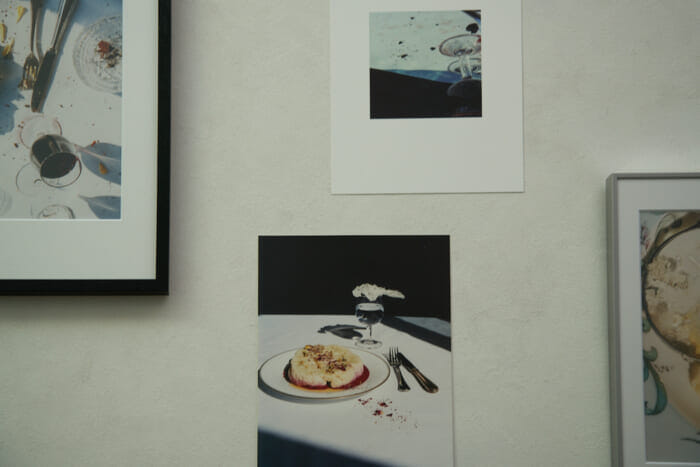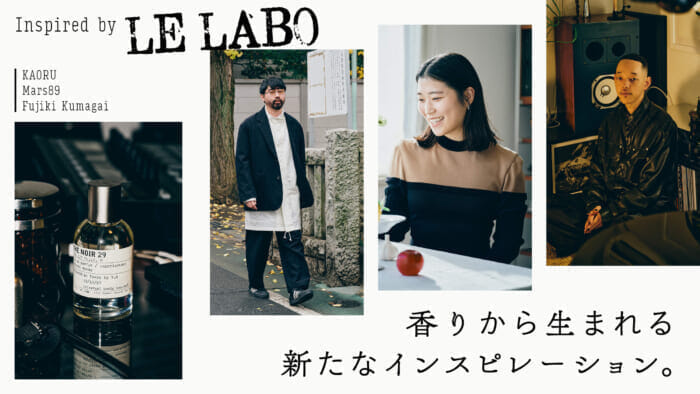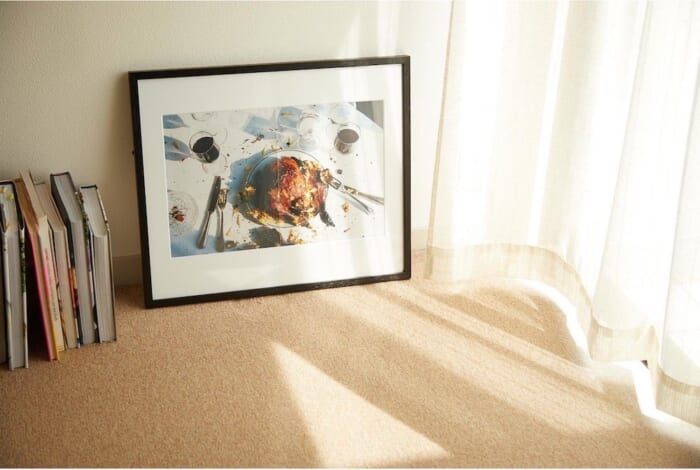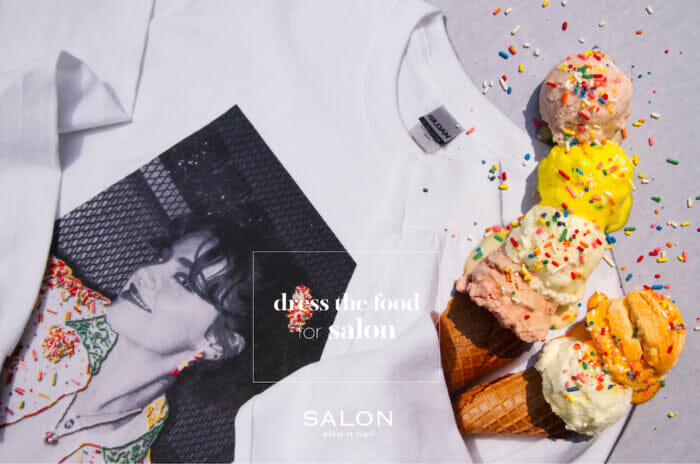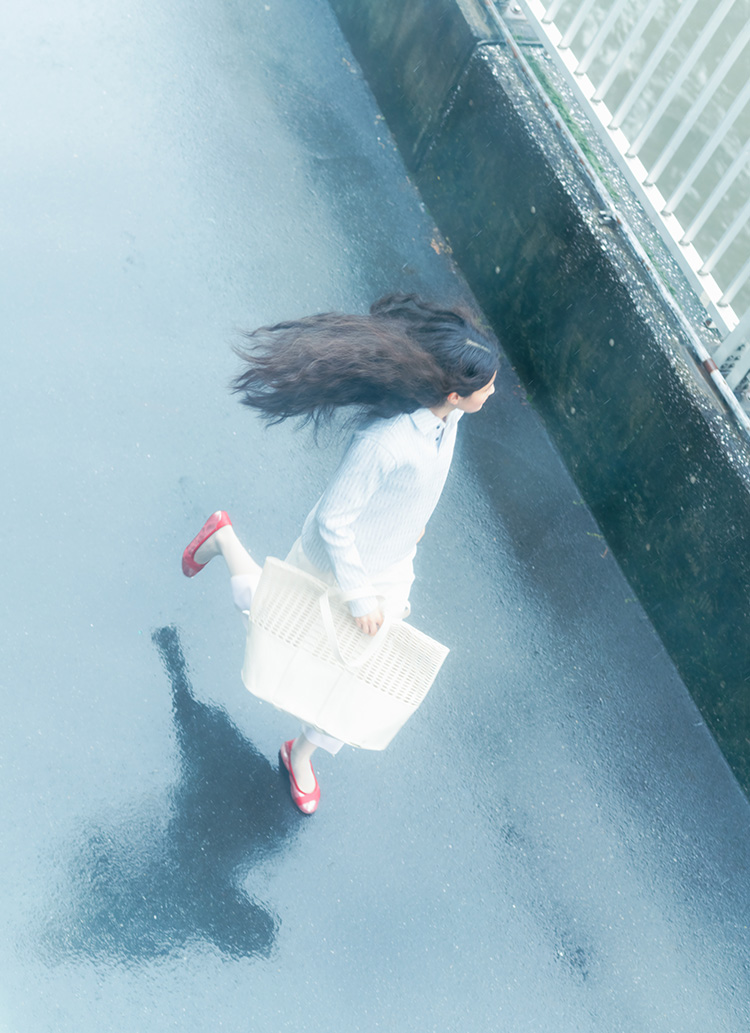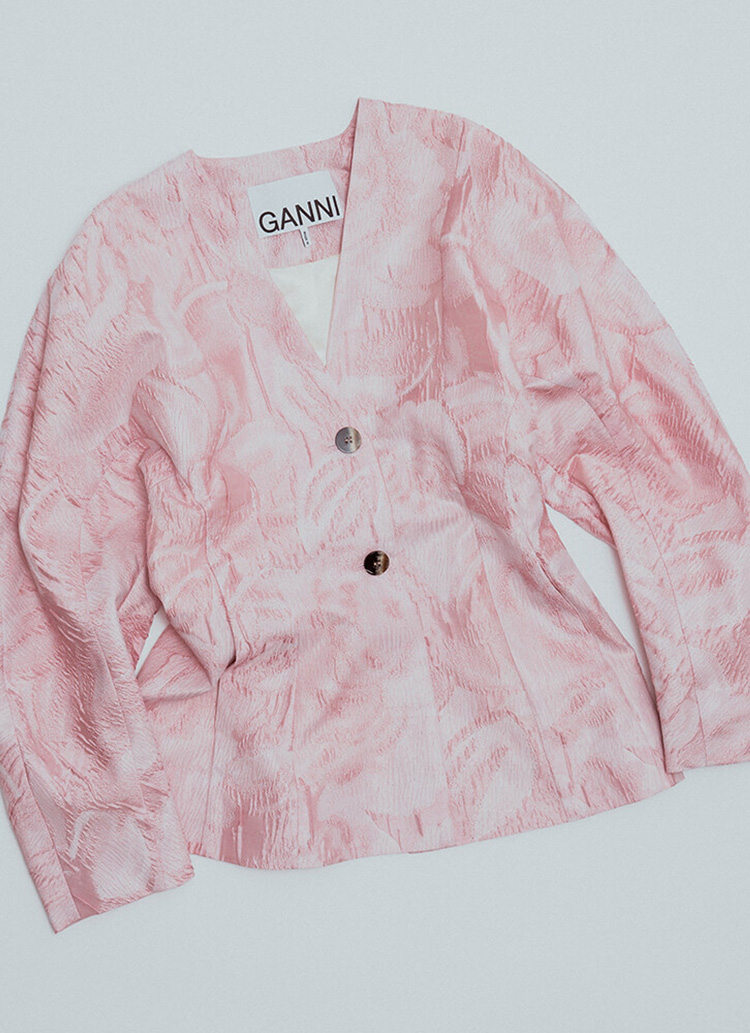Good food is justice. It is true. However, the world is not as simple as a binary argument of good or bad. If we keep looking at food by the criteria of "looks good," "looks good," and "cost-effective," some things will fall through the cracks.
In October 2022, food stylist KAORU published "shichimi magazine" at her own expense. What I sense from this magazine is a new eye for the rich and complex world of food culture and a commitment to visuals. The magazine has already achieved success overseas, where it has been sold at MOMA PS1 and other well-known bookstores.
We visited the exhibition currently being held at "YOKE Gallery" until October 16 (Sun.) and talked to KAORU about her journey to "shichimi magazine" and the conceptual exhibition.
KAORU
Food stylist, organizer of Dress the Food
A food stylist who works extensively in advertising, magazines, and on the web. She is active in a wide range of fields centered on food, from recipe development for corporations to the creation of their visuals. Her work "Food On A Photograph," in which she photographs vegetables and other foodstuffs on top of black-and-white portraits, has attracted much attention, and this October she published "shichimi magazine. The magazine is sold in Japan and other countries, and is attracting attention as it is sold out by pre-order.
Home Page
The world you see when you look at the ingredients.
What was the starting point of "shichimi magazine"?
I like cookbooks, but I wanted to create something different from the ordinary recipe book. Because if you think of a recipe as information, there are countless recipes on the Web, and some people don't need a recipe book as long as they have that information. I wanted to create an informative book that people who pick up the book will feel like, "I definitely want to keep this book! I wanted to create a book that is not only informative but also visually appealing.
It's a book about food, like a photo book.
In New York, where we launched the book, we sent the outline and data of the book to the stores and museums that we wanted to carry it, and then I actually visited them. It's a magazine like this! I got some reactions.
One of the things that surprised me when I looked inside was the visual of moldy ingredients. Normally, mold is bad for food.
I chose the word "The Framing Issue" for the title because I wanted to think about observation. The visuals of food are often considered to be all about elegance, deliciousness, and sizzle, but they don't have to be that way. That is a very important point of view for me.
Does that come from your own experience?
When I am cooking, I can see a different scene from my daily life just by staring at the ingredients. I enjoy that. For example, the ripples of water when boiling an egg are beautiful, or the way the water curves around the egg, or how it resembles the ripples of sand in a karesansui (dry landscape garden). It is a small world in front of me, so to speak, but I feel there is something small but rich in it.
Meaning made into MAGAZINE.
KAORU, you are usually a food stylist, and making books is not your full-time job. How did you come to this level of perfection?
For example, there are foods with unique shapes, right? I can look at a green pepper with an interesting shape for a long time (laughs). But when I think about how best to convey that interest, I feel that it is very similar to fashion. I wonder what kind of thing (foodstuff) should be presented in what way to best convey the appeal of the thing (foodstuff).
Yes, that is true. But it also takes skill to communicate.
I had published a zine in the past, but this was my first experience as the editor-in-chief of a magazine. I had an idea of what I wanted to do and the visuals I wanted to create, but there was still a lot I didn't know about making a book, so I consulted with an art director I respected as I proceeded.
Naruo Hitoki, who is active mainly in the advertising industry, has been appointed as the art director.
I also learned about the printing company Yahkoh Bijutsu from Mr. Naruo. There is a page called "recipe for peeling," and I always thought that the peeled skin of an ingredient is beautiful, but I was wondering how to put that into the paper. I have no knowledge of graphics, so Mr. Naruo consulted with me from the very beginning about what I wanted to convey and how to do it.
Several top-notch photographers are participating in this project. For example, five photographers are shooting on the theme of eggs.
This project started out of curiosity as to what would happen if photographers who do not normally shoot food were to do so. I thought that everyone would have no preconceived notions of what food photography should look like. The reason we chose the name "shichimi magazine" is because we wanted there to be a variety of perspectives.
The magazines are individually cut, so they can be framed and displayed, which is an interesting mechanism.
When I go to art galleries, I like to buy postcards on my way home. Then I thought, what if it were a cookbook? I thought it would be nice to be able to display it and see it in everyday life.
Exhibition gallery without clear explanations.
The exhibition at "YOKE Gallery" is unique in that it seems as if the paper and the space are connected to each other, with materials that can be seen on the paper, such as wine and red thread, actually being placed on the floor.
Here we have four sections that are linked to the paper: "Eggs," "Restaurants," "Recipes," and "Fashion and Food. For example, in the "Restaurants" section, we have included visuals that suggest a restaurant, but we have not limited ourselves to what kind of restaurant it is. We want to leave room for imagination.
Is the lack of explanations part of the "blank space" in this exhibition?
When I give a commentary, I seem to have decided that this is the place to look. We want visitors to "observe" the exhibits. For example, there is a corner where the exhibits change every day, and today (the day of the interview), they have mandarin oranges. But by placing cut oranges on the display, visitors may find that the cross section of the oranges are beautiful. Anyway, I hope that people will be able to observe the oranges freely without deciding what to do with them.
I don't know why I can't stop watching the cooking videos in the gallery, such as boiling an egg.
I think those images have a meditative effect. You can watch it in a daze. I decided to include the video a couple of days before the first day of the exhibition because I felt that this exhibition needed that kind of unguarded time. The video was shot at home and edited by video director Shuhei Yamada.
Did you expand what you could do with the help of a professional?
I used to feel that I had to do everything myself, as was the case with the zine I created in the past, but I felt that this did not allow me to broaden my range of expression. I think that my ideal from now on is to be able to convey my ideas to the viewers of shichimi magazine in a richer expression by asking for the help of professionals in various fields. I have received help from many people for both the book and the exhibition, and I feel that it has turned out much better than I had envisioned at the beginning.
But you have an image of what you want to do, don't you?
Yes, it was. I have learned a lot from working on this project with a variety of people from different genres. I learned a lot from working on this project with a variety of people from different genres, and I think it is even more important to have a clear vision for oneself in any situation, not only for "shichimi magazine" but also for other activities in the future. I also wanted to do more! I would like to continue to do so in the next issue.
shichimi magazine "The Framing Issue" ¥8,800
Photo_Toshio Ohno
Text&Edit_Shinri Kobayashi
Framing
Location: YOKE Gallery
Address: 2F Kowa Building, 1-20-13 Shimoma, Setagaya-ku, Tokyo
Schedule: ~October 16 (Sun.)
Hours of operation: 12:00 - 20:00
Official Instagram







